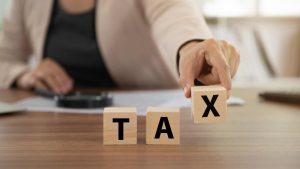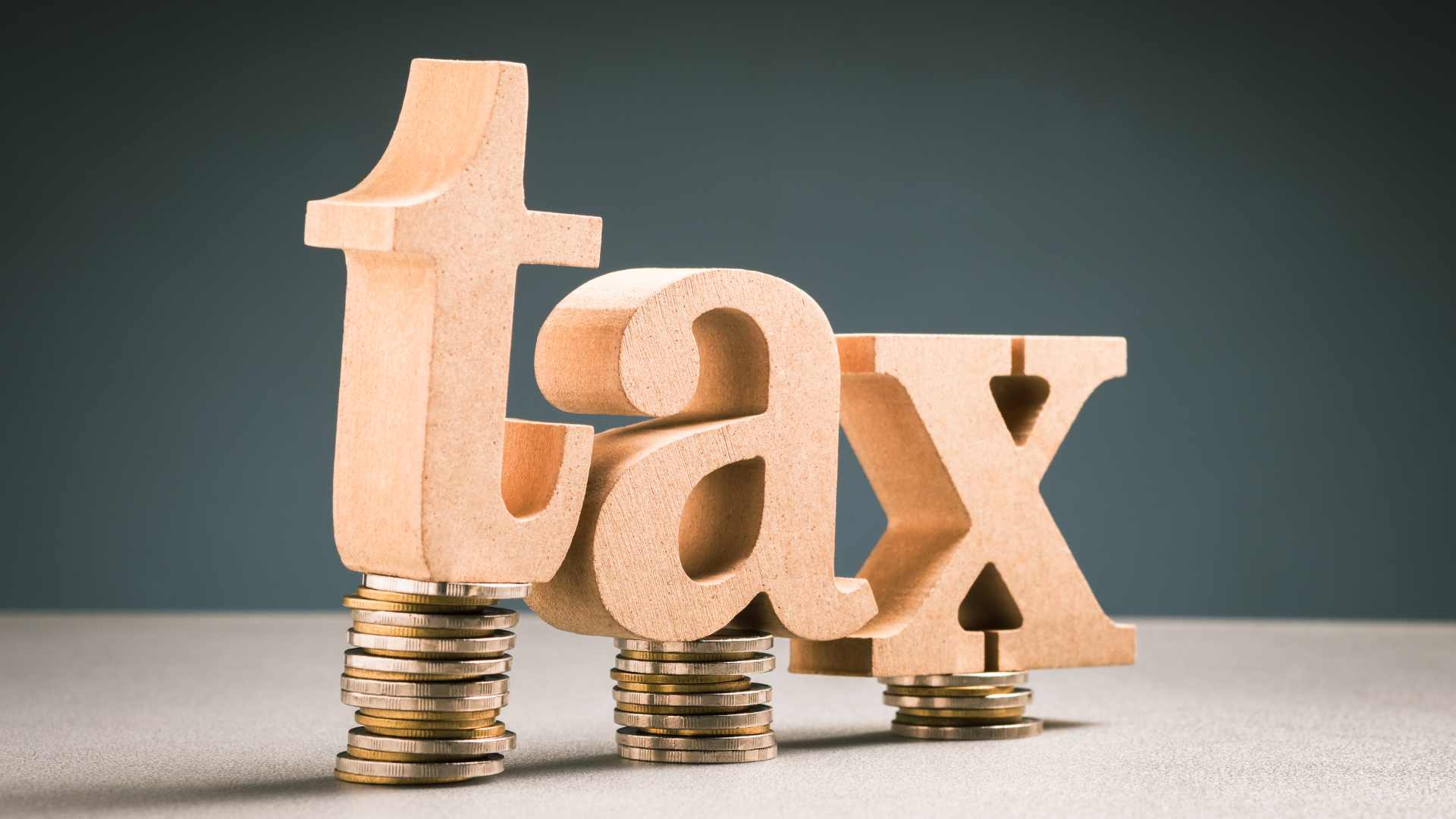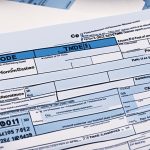Did you know that incorrect tax codes could lead to thousands of taxpayers paying the wrong amount of tax each year? In fact, recent data from HMRC reveals that over 30% of UK taxpayers have experienced tax code errors, resulting in either overpayment or underpayment of taxes.
The 1389M tax code is one such code that can significantly impact your take-home pay. Understanding this code is crucial, especially if you’ve been assigned it due to the Marriage Allowance. This guide provides a comprehensive breakdown of the 1389M tax code, helping you understand its workings, benefits, and how to ensure you’re on the right code.
What is a 1389M Tax Code?

The 1389M tax code is used by HM Revenue and Customs (HMRC) in the UK to indicate a specific tax situation involving the Marriage Allowance. Here’s what it means:
- 1389: This number represents your personal allowance in pounds, which means you can earn £13,890 tax-free during the tax year.
- M: The letter signifies that you are receiving a Marriage Allowance transfer from your spouse or civil partner.
The 1389M tax code is assigned to taxpayers who benefit from the Marriage Allowance, a scheme that allows one partner to transfer 10% of their Personal Allowance to the other partner. This results in an increased tax-free income for the recipient and potentially lower tax payments.
Essentially, if you see the 1389M code on your payslip, it means your personal allowance has been enhanced due to this transfer, leading to less tax being deducted from your salary. Understanding the 1389M tax code is crucial as it helps you accurately calculate your tax liabilities and manage your finances effectively.
How Does the 1389M Tax Code Work?

The 1389M tax code works within the UK’s PAYE (Pay As You Earn) system, adjusting the amount of tax-free income you are entitled to receive each year.
Typically, each taxpayer in the UK is entitled to a standard personal allowance, which for the 2024/25 tax year is £12,570. However, if you receive a portion of your partner’s allowance through the Marriage Allowance, your personal allowance increases.
For example, if your partner earns below the personal allowance threshold and transfers £1,260 of their allowance to you, your tax code changes from the standard 1257L to 1389M. This change means you can earn £13,890 before you start paying income tax.
Here’s a quick comparison of how the 1389M tax code affects your income:
| Tax Code | Personal Allowance | Tax-Free Income | Taxable Income Threshold |
| 1257L | £12,570 | £12,570 | Above £12,570 |
| 1389M | £13,890 | £13,890 | Above £13,890 |
As you can see, with the 1389M code, you are taxed on a smaller portion of your income, which can result in significant tax savings.
Key Points
Understanding the key points of how the 1389M tax code works can help you better manage your finances:
- Increased Personal Allowance: With the 1389M tax code, your personal allowance is higher than the standard amount due to the Marriage Allowance transfer. This reduces the amount of income on which you pay tax.
- Tax Relief: By increasing your tax-free income, the 1389M tax code can result in tax savings of up to £252 annually.
- Annual Adjustment: HMRC reviews tax codes annually, so if your circumstances change (e.g., your partner’s income changes), your tax code may be adjusted accordingly.
- Automatic Application: If you’re eligible and have applied for the Marriage Allowance, HMRC automatically updates your tax code to reflect the change.
Who is Eligible for the 1389M Tax Code?

Not everyone qualifies for the 1389M tax code. Eligibility is determined based on your marital status, income, and whether you and your partner meet specific criteria set by HMRC:
- Marital Status: You must be married or in a civil partnership. Couples who are cohabiting without formal legal recognition are not eligible.
- Income Threshold: The partner making the transfer must have an income below the personal allowance threshold (£12,570 for the 2024/25 tax year), while the receiving partner must be a basic rate taxpayer (earning between £12,571 and £50,270).
- Application Requirement: The Marriage Allowance is not automatically applied; one of the partners must apply through HMRC to initiate the transfer.
Eligibility Criteria for the Marriage Allowance
The Marriage Allowance enables one spouse or civil partner to transfer up to 10% of their unused personal allowance to the other, potentially lowering their combined tax bill. The eligibility criteria for this allowance include:
| Criteria | Details |
| Marital Status | Must be married or in a civil partnership |
| Income of Transferring Partner | Must earn less than the personal allowance threshold (£12,570) |
| Income of Receiving Partner | Must be a basic rate taxpayer (earning between £12,571 and £50,270) |
| Application Process | Must apply through HMRC’s online portal or by post |
| Transfer Amount | Up to 10% of the personal allowance (currently £1,260) can be transferred |
How the Marriage Allowance Works?

The Marriage Allowance is designed to benefit couples where one partner has unused personal allowance. By transferring this allowance, the receiving partner’s tax code (e.g., 1389M) is adjusted to reflect the additional tax-free income.
Here’s how the Marriage Allowance process works:
- Application: The partner with unused personal allowance applies for the Marriage Allowance transfer via HMRC.
- Tax Code Adjustment: Once approved, HMRC adjusts the recipient’s tax code to increase their personal allowance.
- Tax Relief: The recipient benefits from reduced income tax deductions, which increases their take-home pay.
For instance, if the transfer is successful, the recipient’s personal allowance increases by £1,260, which translates into a £252 reduction in their tax bill for the year.
Example:
Let’s consider an example to illustrate how the Marriage Allowance works:
| Partner | Annual Income | Personal Allowance | Tax Code |
|---|---|---|---|
| Spouse A | £18,000 | £12,570 | 1257L Tax Code |
| Spouse B | £6,000 | £12,570 | 1389M Tax Code |
In this example, Spouse A has an annual income of £18,000 and a Personal Allowance of £12,570. Spouse B has an income of £6,000 and a Personal Allowance of £12,570. By transferring 10% of their Personal Allowance (£1,260), Spouse A can reduce their tax liability and lower their overall tax payments.
By utilizing the Marriage Allowance, eligible individuals can maximize their tax benefits and potentially reduce their tax liabilities.
Why Do I Have a 1389M Tax Code?

If you have been assigned the 1389M tax code, it’s likely because you are the recipient of a Marriage Allowance transfer from your spouse or civil partner. This code is used to adjust your personal allowance upwards, reflecting the additional tax-free income you can earn before paying any tax.
Situations leading to the assignment of the 1389M tax code include:
- Marriage or Civil Partnership: You are married or in a civil partnership, and your partner has opted to transfer part of their personal allowance to you.
- Low-Income Partner: Your partner earns less than the personal allowance and does not need the full amount, making them eligible to transfer it to you.
- Basic Rate Taxpayer: You fall within the basic rate tax bracket, making you eligible to receive the additional allowance.
Benefits of a 1389M Tax Code
The 1389M tax code provides significant financial benefits to eligible individuals through the Marriage Allowance. By receiving a transfer of 10% of your partner’s Personal Allowance, you can reduce your tax liability and potentially enjoy lower tax payments, resulting in more take-home pay.
Key Benefits of the 1389M Tax Code:
1. Higher Personal Allowance: The 1389M tax code increases your personal allowance to £13,890 plus 10% of your partner’s allowance, reducing the portion of your income that is taxed.
2. Tax Savings: With the 1389M tax code, you could save up to £252 annually, depending on the transferred allowance and your income level.
3. Optimized Tax Situation: The code helps couples make the most of their combined personal allowances, leading to a potentially lower overall tax liability.
4. Simplified Process: The 1389M tax code is automatically assigned by HMRC, reducing the need for additional applications or paperwork.
Comparison:
| Without 1389M Tax Code | With 1389M Tax Code |
|---|---|
| Full individual personal allowance | Individual allowance + 10% of partner’s allowance |
| Taxed on full income | Taxed on reduced income |
| Higher tax liability | Lower tax liability |
| Less take-home pay | Potentially higher take-home pay |
By utilizing the Marriage Allowance through the 1389M tax code, eligible couples can benefit from reduced tax payments and increased disposable income, leading to greater financial flexibility and stability.
How to Apply for 1389M Tax Code in the UK?

The 1389M tax code is automatically applied by HMRC if you meet the eligibility criteria for the Marriage Allowance. If you believe you are eligible but have not received the 1389M tax code, follow these steps:
1. Check Eligibility: Ensure both you and your partner meet the criteria for the Marriage Allowance.
2. Visit the HMRC Website: Go to the Marriage Allowance section on the HMRC website to verify the criteria and application details.
3. Submit Application: The partner transferring their allowance must provide details such as National Insurance numbers and income information through the HMRC website.
4. Receive Confirmation: Once HMRC processes the application, they will update your tax code to 1389M. This update might take some time to reflect in your tax documents.
The Marriage Allowance needs to be renewed each tax year, but it will continue automatically if your circumstances remain the same. If you need assistance or further clarification, contact HMRC’s helpline for support.
Steps to Inquire about the Application Process:
1. Prepare your personal details and relevant information, such as your National Insurance number, income details, and partner’s details.
2. Contact HMRC‘s helpline at 0300 200 3300 to speak with a representative.
3. Explain your situation and mention that you believe you are eligible for the Marriage Allowance.
4. Provide the necessary information and answer any questions the representative may have.
Follow any additional instructions given by the representative to complete the application process.
HMRC will review your application and inform you of the outcome. If you are eligible for the Marriage Allowance and the 1389M tax code, it will be automatically applied to your tax records. Keep in mind that it may take some time for the updated tax code to reflect in your tax documents and calculations.
Applying for the 1389M tax code is a straightforward process that ensures you can benefit from the Marriage Allowance and potentially reduce your tax liability. If you have any further questions or need assistance, don’t hesitate to reach out to HMRC for guidance.
How to Check and Update Your 1389M Tax Code?
To ensure your 1389M tax code is accurate for the 2024/25 tax year, you can use the HMRC tax code checker, a user-friendly online tool that helps you understand the numbers and letters in your tax code.
This tool provides clarity on your tax-free income and how your tax will be calculated based on your income and allowances for the current tax year.
Here’s how you can check and update your 1389M tax code:
1. Check Your Payslip: Your tax code, including the 1389M code, is listed on your monthly payslip or annual P60 form. Verify that the code is correct and reflects your current circumstances.
2. Use HMRC’s Online Service: Log in to your Personal Tax Account on the HMRC website to view your current tax code. This service allows you to update your details if necessary and ensure your tax code is accurate for the 2024/25 tax year.
3. Contact HMRC: If you notice any discrepancies or believe your tax code is incorrect, contact HMRC directly. It’s crucial to address any errors promptly to avoid being overtaxed or undertaxed.
Additionally, you can use tax code calculators to estimate your tax liabilities and allowances, helping you plan your finances and ensure you’re paying the correct amount of tax.
Regularly checking and updating your 1389M tax code will help you avoid any potential issues with HMRC and keep your tax affairs in order for the 2024/25 tax year.
Conclusion
Understanding the 1389M tax code is crucial for individuals in the UK to accurately calculate their tax liabilities and allowances. This tax code, which signifies the Marriage Allowance, can present tax-saving opportunities for eligible individuals.
By staying informed about changes in tax codes and promptly updating your tax code if necessary, you can ensure that you are taking full advantage of the benefits available in the UK tax system.
The HMRC regulations governing tax codes are designed to uphold fairness and accuracy in tax calculations and payments. It is important to familiarize yourself with the tax codes explained by HMRC to ensure that you are compliant and making the most informed financial decisions.
Whether you are eligible for the 1389M tax code or another tax code, understanding how the UK tax system works will empower you to navigate your tax obligations with confidence.
Remember that the HMRC provides resources such as tax code calculators to help you estimate your tax liabilities and allowances. If you have any doubts or need assistance, do not hesitate to contact HMRC for guidance.
By staying proactive and informed about the nuances of the tax system, you can optimize your tax planning strategies and avoid any potential issues down the line.
FAQ
What does the 1389M tax code mean?
The 1389M tax code indicates that you receive a personal allowance of £13,890 due to a Marriage Allowance transfer from your spouse or civil partner. This allows you to earn more before being taxed, effectively reducing your tax liability.
How do I know if I am eligible for the Marriage Allowance?
You are eligible if you are married or in a civil partnership, and either you or your partner earns less than the personal allowance threshold (£12,570 for the 2024/25 tax year). Additionally, the partner receiving the allowance must be a basic rate taxpayer.
Can I change my 1389M tax code if it is incorrect?
Yes, you can change your 1389M tax code if you believe it is incorrect. Contact HMRC directly through their website or helpline to update or correct your tax code.
What are the benefits of the 1389M tax code?
The benefits include an increased tax-free allowance, which can reduce your overall tax liability, and potential tax savings of up to £252 per year.
How do I apply for the 1389M tax code?
To apply for the 1389M tax code, you need to apply for the Marriage Allowance through the HMRC website. The partner transferring their personal allowance must provide the necessary details, such as National Insurance numbers and income information.
Why was my tax code changed to 1389M?
Your tax code was likely changed to 1389M because you are the recipient of a Marriage Allowance transfer from your partner. This code reflects the additional tax-free allowance you have received.
How often should I check my tax code?
It’s advisable to check your tax code at least once a year or whenever there is a change in your financial or personal circumstances, such as changes in employment, salary, or marital status.




















No Comments
Leave a comment Cancel